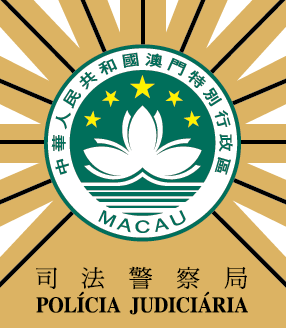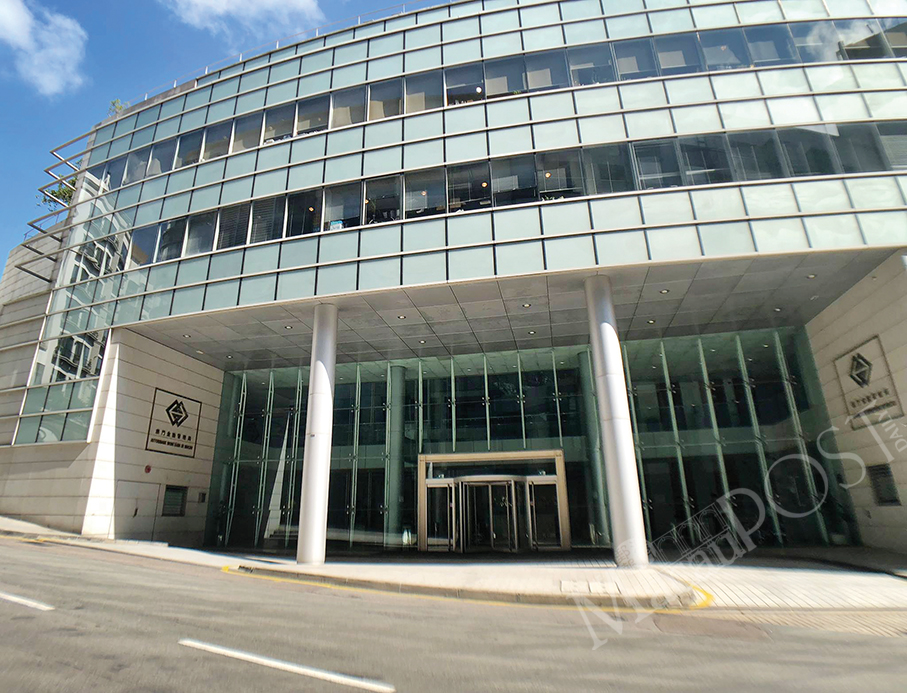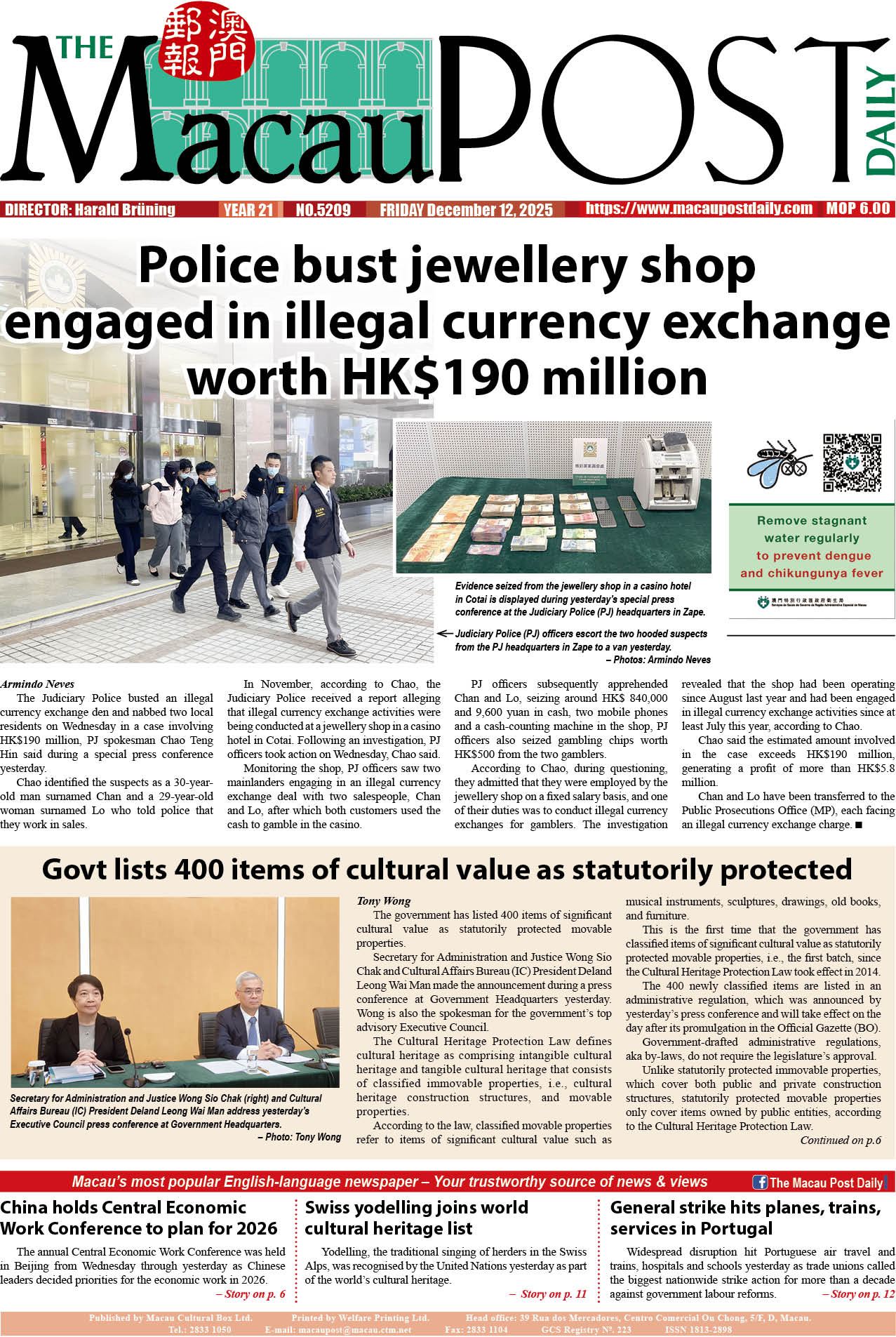After his local exhibition in May last year, artist-photographer-writer Water Poon Kwing-wing (水禾田) and his wife Romy Cheung Ka-po (張嘉寶) now present an event together, entitled “101 Bowls – An Art Exhibition Featuring Water Poon’s Art & Romy Cheung’s Fashion” (101缽子 – 水禾田作品及張嘉寶衣著設計展) at The Grand Suites of The Four Seasons Hotel Macao.
The exhibition is hosted by Sands China. This time, Poon created his artwork in cooperation with a ceramics company – JOYYE Arts & Crafts Co. Ltd. in Guangzhou (卓藝陶瓷) to produce the 101 bowls. The exhibition aims to showcase the beauty of Chinese ceramics and paintings, as well as Chinese culture. Ten of the more than 40 bowls on display in Macau have already been sold for charity.
Poon met The Macau Post Daily for an interview on Friday. He pointed out that JOYYE created the 101 bowls series to which he added his own ink paintings and words. He also selected a number of bowls for each of the touring exhibitions at different venues such as in Guangzhou and Shanghai to raise funds for charity to support different organisations. He underlined that the local event this time is based on the motif of “Full of Content, Full of Love” (盛載物、盛滿愛), displaying more than 40 bowls (缽子) and some of Poon’s paintings. Twenty-four of the bowls depict ink paintings and words based on the 24 Chinese solar terms, together with Cheung’s special design of unique folk-art costumes. Moreover, 10 of the bowls have been donated for a charity sale to Rainbow Road Macau (彩虹路) to support the development of art education for young people in the mainland’s ethnic minority regions.
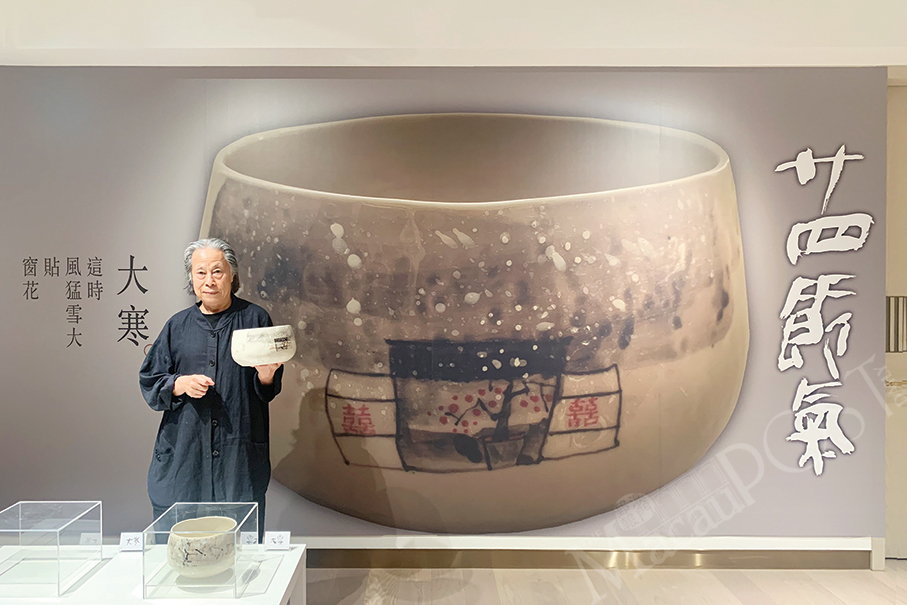
Water Poon Kwing-wing poses at The Grand Suites of The Four Seasons Hotel holding a bowl depicting the 24 Chinese solar terms – “Major Cold” (大寒).
Looking at the bowls, Poon told The Macau Post Daily that “natural things are forever” (自然的東西,就是永久的). He said he came up with the idea of matching the bowls with clothing in the Buddhist monk style as it could depict the artworks’ natural beauty, spirit of virtue and genuineness more perfectly. Therefore, he asked his wife to have a joint exhibition with him.
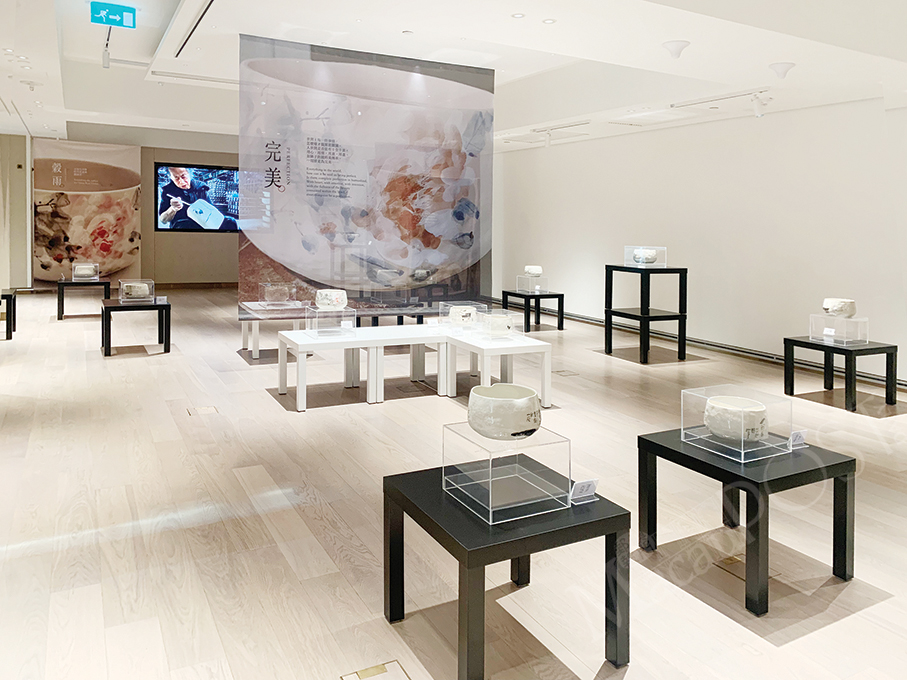
Poon reminded people to treasure things that they already have and their loved ones, besides letting the public know more about Chinese culture through the exhibition. He said that charity is even more meaningful when it carries the message of “give and take”. He added that “101” represents accomplishment (from one to 100), and returning to the starting point, i.e. one, but not forgetting the original intention. By exhibiting the bowls – containers full of love to spread this warm message and helping others unconditionally, is the event’s purpose.
Poon also said he hopes that the artwork would make the audiences feel calm and let go of their problems after visiting the exhibition. He underlined that he prefers to present artworks in a simple way to make it easy for the public to understand them, thus adding colours to their lives. He also said that he likes to add different elements into his creations, continuing with his ongoing attempts to achieve artistic breakthroughs – thus each exhibition turned into a classic – an unforgettable memory to remember from time to time.
Poon is an artist, photographer, designer and film director who was born in Foshan city’s Nanhai district (南海區) in Guangdong province. He was brought up in Hong Kong and then lived in Vancouver for some time. He now lives in Zhuhai. His Chinese pen name (水禾田) comes from his Chinese last name Poon (潘). Poon has published over 50 photo albums, art books and travel notes. His works have been exhibited around the world, including the mainland, Hong Kong and Macau as well as in foreign countries such as Singapore, Japan, Canada, and the United States. He has won a wide range of awards including Hong Kong’s Ten Outstanding Professional Youths of the Year, Hong Kong Artist of the Year for Photography, and the Martell Artist of the Year in Shanghai.
Poon’s wife, Cheung Ka-po was born in Hong Kong. “I was raised in a family running a clothing factory and a garment-making business, and I found making clothes interesting. I was curious and wanted to explore more whenever I had the opportunity”, Cheung told The Macau Post Daily.
She added that “after graduating from secondary school in the 1980s, I decided to study fashion design at Bunka Fashion College (文化服裝學院) in Tokyo.” The college publishes a monthly women’s magazine called Soen (裝苑) focused on fashion, Cheung underlined.
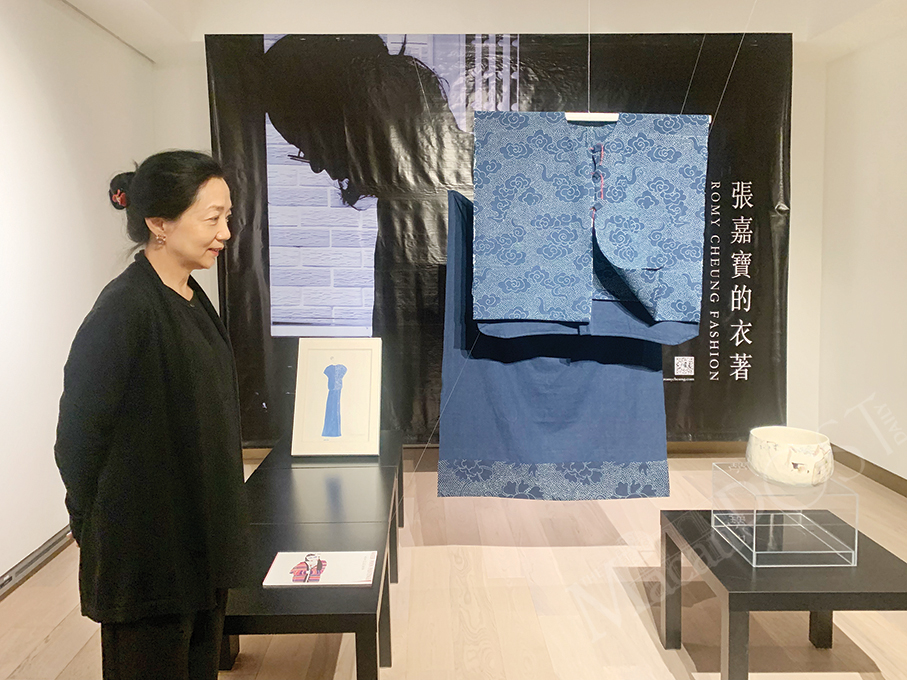
Romy Cheung Ka-po poses at the exhibition venue together with one of her folk-art costumes featuring the traditional Nantong blue calico design. Photos: Camy Tam
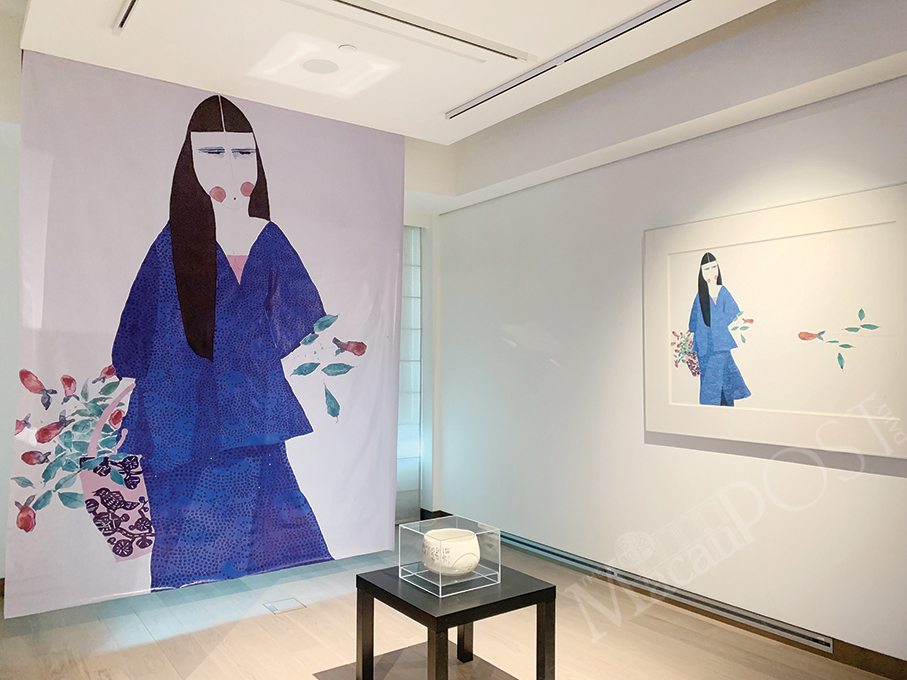
After returning to Hong Kong, Cheung pursued her passion of fashion design. She said she had learnt a lot from Japanese culture such as being neat, disciplined, paying attention to details and having a good attitude towards one’s work. She said some of the exhibits feature traditional Nantong blue calico* (南通藍印花布) from Jiangsu province, showcasing its unique style incorporating contemporary design and Chinese traditional style – “China-Chic” (國潮 guochao in Chinese pinyin) which has become increasingly popular, particularly among the nation’s younger generation.
The exhibition runs until May 29 daily from 11 a.m. to 7 p.m. on Level 6 at The Grand Suites of The Four Seasons Hotel in Cotai. Admission is free.
As part of the government’s COVID-19 epidemic prevention measures, all visitors entering the hotel must wear a facemask, have their temperature checked and present a digital health code.
*A kind of rough cloth made from unbleached and not fully processed cotton, often printed with a bright pattern.






